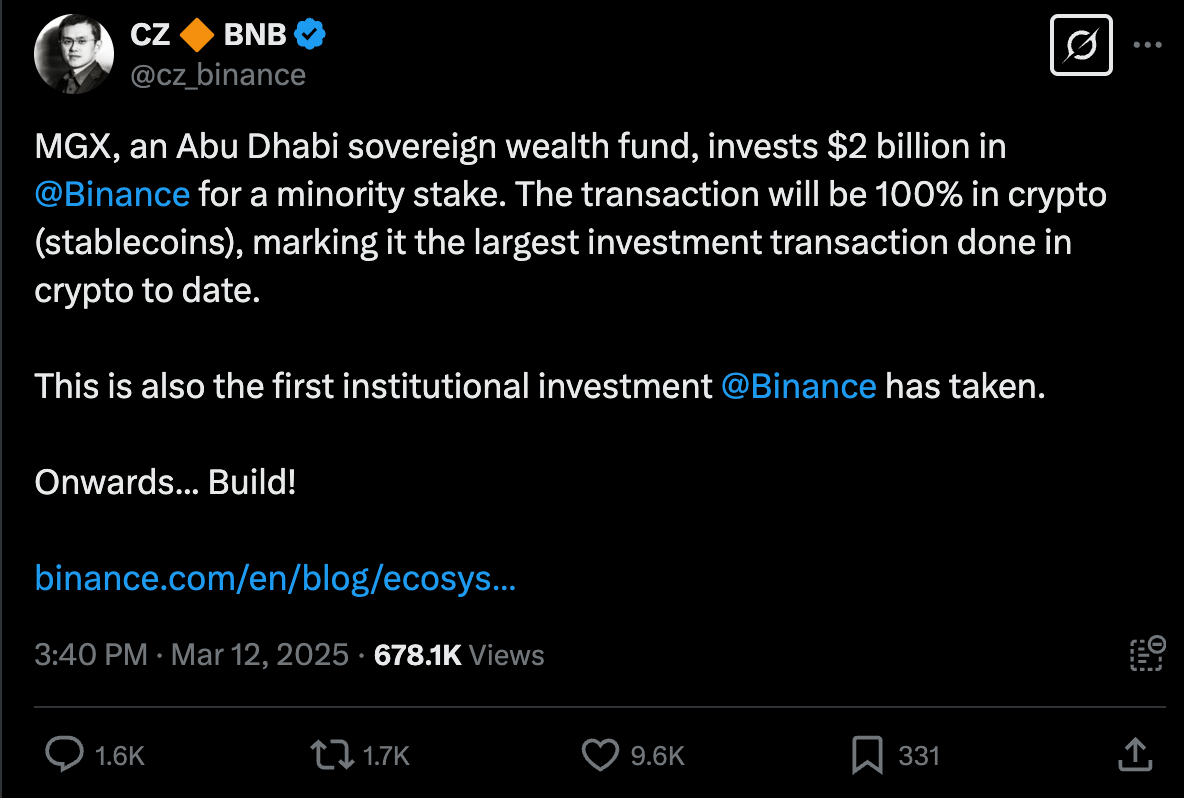Ethereum’s $1,800 Meltdown: Is the Altcoin Party Over?
What's happening to the 2nd biggest cryptocurrency in the world?
The financial world is hemorrhaging. In a gut-wrenching freefall, Ethereum—once the unstoppable engine of DeFi and NFTs—has nosedived to a bone-chilling $1,800; a staggering $4,100 peak just three months ago. This isn’t a dip; it’s a full-blown demolition, a rout so brutal that even Bitcoin maxis are whispering, “Is this the end of the altcoin era?”
But Ethereum isn’t suffering alone. Last weekend, global markets imploded in a synchronized meltdown, vaporizing $1.3 trillion in wealth as stocks cratered like a house of cards in a hurricane. The S&P 500 bled out its worst week since 2020, tech titans like Nvidia and Tesla were mauled, and Trump’s tariff tantrums lit a fuse under an already explosive cocktail of inflation fears and geopolitical chaos.
Now, the unthinkable looms: Could crypto’s bleeding trigger a systemic crash?
Ethereum’s collapse isn’t just about charts—it’s a warning siren. Once-booming DeFi protocols are gasping for liquidity. NFT floor prices have evaporated faster than rain in the Sahara. And as Wall Street giants dump risk assets, crypto’s lifeline—the “digital gold” narrative—is fraying. Meanwhile, Bitcoin ETFs, hailed as the savior of institutional adoption, are bleeding inflows faster than a slashed tire.
But here’s the twist: This could be the storm before the resurrection.
History whispers that markets always overshoot. The same panic driving today’s sell-offs could birth tomorrow’s generational buying opportunity. Will Ethereum’s “Pectra” upgrade spark a phoenix-like rally? Can Trump’s tariffs backfire into a risk-asset rebound? Or are we staring down crypto’s darkest hour?
Buckle up. The answers—and the chaos—are just beginning.
Ethereum’s Existential Crisis
Ethereum is having a rough year. The token has plunged 53% since December, and U.S. spot ETH ETFs have bled $119 million in outflows over four weeks. Analysts blame everything from Trump’s tariffs to Ethereum’s lackluster network activity. High transaction fees are scaring off developers, while competitors like Solana and Avalanche lure users with faster, cheaper alternatives.
Yet, hope persists. VanEck predicts ETH could hit $6,000 by 2025, and Ethereum’s upcoming “Pectra” upgrade promises fixes for its speed and cost issues. But for now, Ethereum feels like a superstar athlete in a slump—everyone’s waiting for the comeback.
Verdict: Ethereum needs a win, fast. Until then, the bears are throwing a pool party.
Bybit Hack Fallout: OKX Under Fire
A 1.5 billion heist on Bybit has put rival exchange OKX in regulators’ cross hairs. European investigators suspect OKX’s Web3 platform was used to launder 100 million of the stolen funds. OKX CEO Star Xu denies wrongdoing, blaming Bybit’s “vulnerable API” for the breach. Meanwhile, North Korean hackers—linked to the attack—are likely sipping virtual mai tais on a beach somewhere.
Regulators are now debating whether OKX’s “decentralized” services should fall under strict EU crypto laws. The outcome could redefine how platforms handle privacy, compliance, and accountability.
Moral of the story: In crypto, even the good guys need better alibis.
Binance Scores $2 Billion from Abu Dhabi
Finally a good wednesday news. Binance, the world’s largest crypto exchange, just landed a $2 billion investment from Abu Dhabi’s MGX—paid entirely in stablecoins. The deal, the biggest in crypto history, cements the UAE’s ambition to become a global crypto hub. Binance now employs 1,000 staff in the region, and CEO Richard Teng (a former Abu Dhabi regulator) is living his best life as crypto’s newest power broker.
Why it matters: When oil money meets crypto, the result is explosive. The UAE is betting big on digital assets, and Binance is happy to play tour guide.
Mt. Gox: The Crypto Ghost That Won’t Quit
A decade after losing 850,000 Bitcoin in one of history’s biggest hacks, Mt. Gox is back in the headlines. The defunct exchange recently moved 11,501 BTC (worth
$905 million) to an unknown wallet, extending its credit or repayment deadline to October 2025. The market is on edge: if Mt.Gox dumps its remaining 35,915915 BTC ($2.8 billion), Bitcoin’s price could nosedive.
Investors are torn. Some see this as a delayed justice for creditors; others fear a sell-off tsunami. Either way, Mt. Gox remains the crypto equivalent of a zombie apocalypse—unpredictable, unstoppable, and deeply unsettling.
Europe vs. U.S. Stablecoins: A Clash of Titans
European officials are sounding the alarm over U.S.-backed stablecoins, warning that dollar-pegged tokens like USDT and USDC could hand America unchecked financial power. Pierre Gramegna of the European Stability Mechanism called it a “strategic play for global dominance,” while the European Central Bank (ECB) scrambles to fast-track its digital euro project.
Meanwhile, the U.S. is doubling down. President Trump recently signed executive orders supporting dollar stablecoins and even proposed a “Strategic Bitcoin Reserve.” The ECB’s Christine Lagarde, however, refuses to include cryptocurrencies in Europe’s reserves, calling them too risky. It’s a classic standoff: the U.S. wants to export dollar dominance, Europe wants to protect its autonomy, and crypto is caught in the crossfire.
Takeaway: This isn’t just about stablecoins—it’s a geopolitical chess match. Whoever controls the digital dollar could shape the future of global finance.
The Big Picture
Bitcoin swung wildly, altcoins rode political tweets, and regulators bickered over stablecoins. But here’s the thing: crypto thrives on chaos. Every crash, hack, or regulatory spat is just another chapter in its unscripted drama.
P.S. If you sold your crypto this week, remember: even Warren Buffett misses a trade sometimes. Just don’t forget to buy back before the next Trump tweet.






